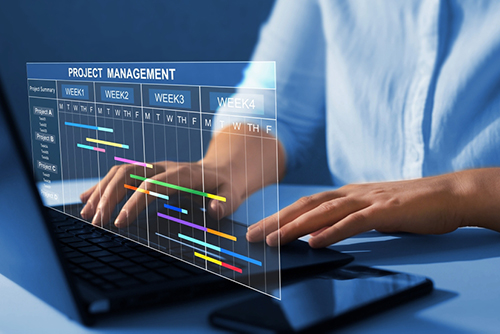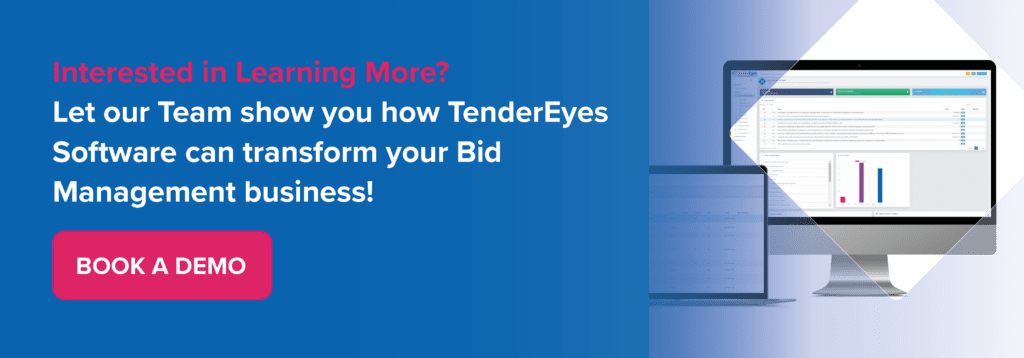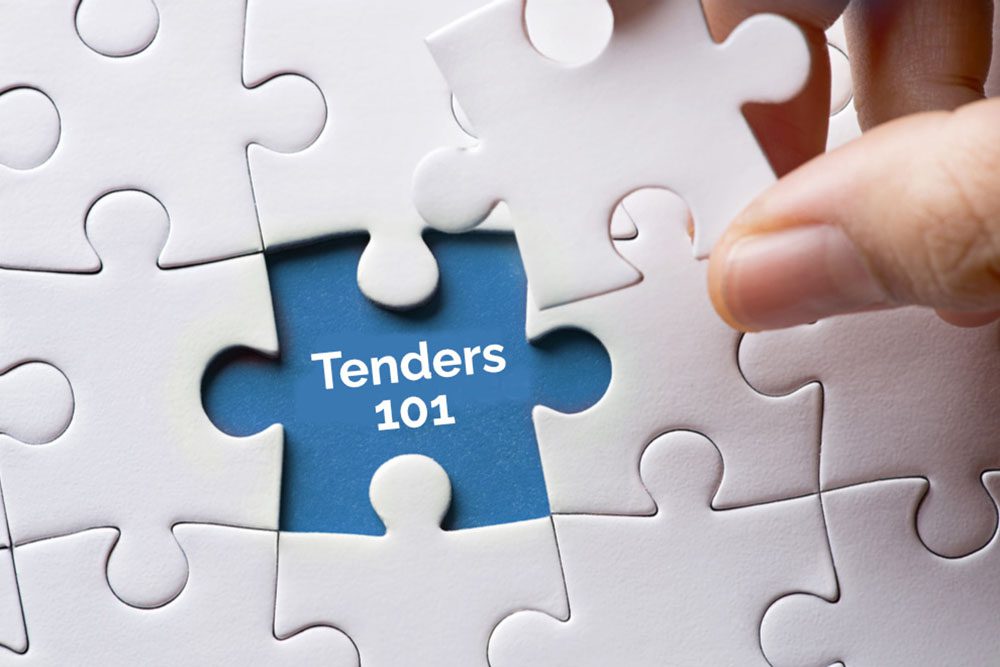Meticulous project management is vital for any organisation bidding for complex high-stakes public or commercial tenders.
Especially when coordinating multiple teams and managing vast volumes of content and numerous tasks, all to generate winning tender responses. And while meeting stringent deadlines in fiercely competitive landscapes!
So, let’s delve into the essential strategies for mastering project management in tender pursuits. Plus, an invaluable bonus tip, where we explore the transformative role of technology support, spotlighting how TenderEyes can elevate your organisation’s tendering endeavours and success.
“Organizations that prioritise project management enjoy higher project success rates”. Project Management Institute (PMI)
Tip 1: Mobilise Bid Project Rapidly
Given the tight deadlines involved in tenders, swift mobilisation of the tender project is paramount. Once the pursuit decision has been made every hour counts. Any delays during the qualification stage or in kick-starting the project will impact the time available to compile quality tender submissions.
Establishing a seamless workflow from qualification to project mobilisation and set-up will be crucial for project efficiency. Providing team members with easy access to vital information and documentation will also help eliminate unnecessary delays and allow actions to be instigated quickly. Precious time saved in these early stages will allow your Bid Team and Subject Matter Experts the space to finesse tender responses and secure higher evaluation scores.
Tip 2: Allocate Bid Resources Wisely
With numerous disciplines, teams and stakeholders involved, successfully managing resources is crucial. This can be particularly challenging when Bid Teams, Subject Matter Experts and Approvers are situated in different geographies, and time zones.
Ensuring early identification and engagement of the project team, with clearly defined roles and responsibilities, is critical to project success. Ensuring activities and tasks are allocated appropriately and completed to the required level and deadlines is paramount.
This requires understanding of resource availability throughout the project period. Team members may be working on several tenders at the same time, have other work pressures and priorities, be away from the office, on leave or off sick during the project period. Early identification of any resource limitations or roadblocks will be essential to avoid project delays or tasks being left incomplete.
Tip 3: Understand Tender Requirements
The depth to which project requirements are understood, will reflect in the quality of the final tender submission. Therefore, time needs to be allocated to fully assessing the procuring agency’s tender documentation and needs. This will include:
- Executive Summary: goals and ambitions for the contract.
- Evaluation Criteria: price/quality/technical mix, the pass/fail criteria for binary questions, and the scoring mechanisms for all other questions.
- Scoring Matrix: calculation for all the individual scores for each level; question, section, envelope, overall.
- Standard Terms and Conditions: details of the formal contract.
- Response Documentation: detailed questionnaire, pricing matrix, method statements, etc s to be answered in the tender submission.
It is vital to quickly grasp the project’s intricacies, goals, and constraints. Paying attention to every detail will help in understanding the scope of work, project objectives, technical specifications, and contractual obligations.
Having access to the Sales Team‘s qualification assessment, identified risks and win themes will also be essential to provide further context and direction for the tender submission.
Tip 4: Create Detailed Project Management Plan
With tight timescales and submission deadlines to meet, developing a comprehensive project plan is essential. Resources, activities, timelines, and deliverables need to be effectively managed.
The plan needs to include the project’s scope, objectives, key milestones, and dependencies. Breaking down the project into stages and smaller, manageable tasks will help in assigning responsibilities, estimating time and monitoring progress.
Establishing a robust project methodology or framework such as Waterfall, Agile or PRINCE2, which can be repeated and consistently followed for each bid will ensure focus is set on critical elements as well as saving valuable time.
Regularly reviewing and updating the plan as the project progresses ensures that it remains aligned with evolving requirements and circumstances.

Tip 5: Maximise Communication & Collaboration
Effective communication is the foundation for successful project management, especially in tender projects requiring close collaboration between multiple disciplines and teams. This is especially critical for the work undertaken by the Bid Team and Subject Matter Experts when crafting bid responses.
Establishing clear and open communication channels ensures that all parties are informed, aligned, and engaged throughout the project lifecycle. This includes regular meetings, progress reports, status updates, and documentation of decisions and agreements.
Tailoring communication methods and frequency to suit the preferences and needs of different stakeholders will help in maintaining engagement and resolving issues in a timely manner.
Early and ongoing engagement throughout the project in conjunction with a culture of transparency and collaboration will encourages proactive interaction, commitment and problem-solving among team members. All essential when compiling complex tender responses.
“70% of workers believe that better collaboration would boost productivity and work efficiency”. Corel

Tip 6: Ensure Tender Quality
With deadlines looming, Bid Teams and Subject Matter Experts may be required to reuse previous low scoring tender responses or rush to generate new content. Time needs to be built into the project plan to ensure quality control measures are in place.
This requires the internal testing and assessment of individual questions and answers against the procuring agency evaluation criteria and scoring methodology. There may also be internal criteria that you set and test against.
This may be the adoption of the TenderEyes 4 Cs Model (criteria to ensure bid responses are compliant, competitive, compelling and convincing) or at the very least confirming branding, spelling and grammar are all correct.
This ensures the identification of low scoring responses that can be further finessed and improved. Every point improvement secured may just win you the bid!
Tip 7: Manage Bidding Risks
Tender submissions encompass a wide range of intellectual property and confidential information about your business. Ensuring brand reputation or financial risks are minimalised is a critical element of tender project management.
Attention needs to be given to ensuring the content within tender responses is accurate, current, and properly aligned to your business objectives, goals, products and services. Adopting formal review, approval and sign-off procedures for each and every tender response and the final submission is critical to managing any risks.
Consideration also needs to be given to identifying and mitigating any risks in completing projects and submitting tenders on time. This requires defined processes, active progress monitoring and rapid issue resolution.
Internal and external compliance issues, processes and approvals need to be regularly audited and reviewed to ensure any gaps and potential future risks are mitigated.
Tip 8: Document Everything
Maintaining accurate and comprehensive records and documentation is essential for ensuring transparency, accountability, and traceability throughout the project lifecycle. This includes project plans, information requests, task completions, content generation, communications, and approvals.
Providing easy storage, access, retrieval, and sharing of information among project stakeholders will be essential to success. Additionally, documenting lessons learned, and best practices enables continuous improvement and knowledge sharing across projects and teams.
In addition, a dynamic Bid Library with essential standard business information, documents, images, presentations and generic tender questions and answers will make a significant impact on project efficiency. All content can be regularly reviewed, updated and improved. Easy access and AI search and editing tools will negate the need for repetitive cut and paste activities and save valuable time in building tender responses and submissions.

Automation software to archiving and efficiently manage and information files.Document Management System or DMS.Consultant information technology (IT) working on laptop.Internet Technology Concept.
Tip 9: Engage Partners & Contractors
Tenders involving partners and contractors bring another level of complexity to project management. Early engagement and establishing contracts, service level agreements (SLAs), and expectations regarding deliverables, timelines, and quality standards is essential.
Regular communication and performance evaluations will help in monitoring partner and contractor contributions and address any issues or concerns promptly. Building strong relationships based on trust, transparency, and mutual respect will help foster commitment and collaboration to help enhance content within tender responses.
Tip 10: Improve Tender Management
Striving to be competitive in your tender submissions is a given. However competitive advantage can also be gained through the strength of your bid strategies, processes, and decisions.
Undertaking regular assessment of your project management performances and results is an essential element to implementing continuous improvement strategies.
Including a post-project review meeting as a standard stage of your project management framework will ensure this happens. It will provide the opportunity for stakeholders to share analysis, feedback and learning. Roadblocks and gaps in process efficiency and tender response quality can be identified and resolved for future tender projects.
Bonus Tip: Use Appropriate Technology
Lastly, but certainly not least is to consider the business technology being used to support your project management activities. Relying on email, spreadsheets or even generic project management apps may be hampering your progress.
Adopting a dedicated tender management solution such as TenderEyes, can provide numerous benefits and competitive advantage.
The software is designed specifically to deal with the complexities of the tender process, people, content, and tasks involved. Powerful intuitive tools, workflow automation and in-built best practice, all ensure your project management performance is optimised. Giving you the time to focus on creating compliant, competitive, compelling and convincing tender submissions!
TenderEyes highlights to help implement the above Project Management tips include:
- Mobilise Bid Project Rapidly: Automated set-up and population of procuring agency documentation and qualification intelligence within the TenderEyes Project Workspace.
- Allocate Bid Resources Wisely: Automatically allocate and notify project team of project and send invites for kick-off and progress meetings.
- Understand Tender Requirements: Easy access for all stakeholders to procurement documents and sales insight.
- Create Detailed Project Plan: Set a custom or industry recognised project framework with scheduled stages. Easily monitor and review progress through Kanban charts, timelines and task status lists.
- Maximize Communication & Collaboration: Easy assignment and reminders for information requests, approvals, or other tasks.
- Ensure Tender Quality: Easily test and assess draft tender responses against key facts, win themes, scoring methodology and scores. Criteria can be both procuring agency methodologies and your own internal benchmarking.
- Manage Bidding Risks: Set and easily comply to defined project framework and processes with auditable assignment and records of approval and sign-off activities.
- Document Everything: Dedicated Knowledge Bank for business documentation, information and content as well as standard tender Q &As. With easy cognitive search, retrieval and editing using AI technology. Plus valuable metadata (status, expiry, owner etc) and approvals.
- Engage Partners & Contractors: Record all communications and documentation associated with partners & contractors as well as contributions to tender responses.
- Improve Tender Management: Via the Business Analytics Module, access detailed data on project performance and individual and past tender results and response scores to identify areas of weakness, roadblocks or inefficiencies. Plus, areas of excellence to share and celebrate with the team. Thus, providing a valuable roadmap to continuous improvement.







